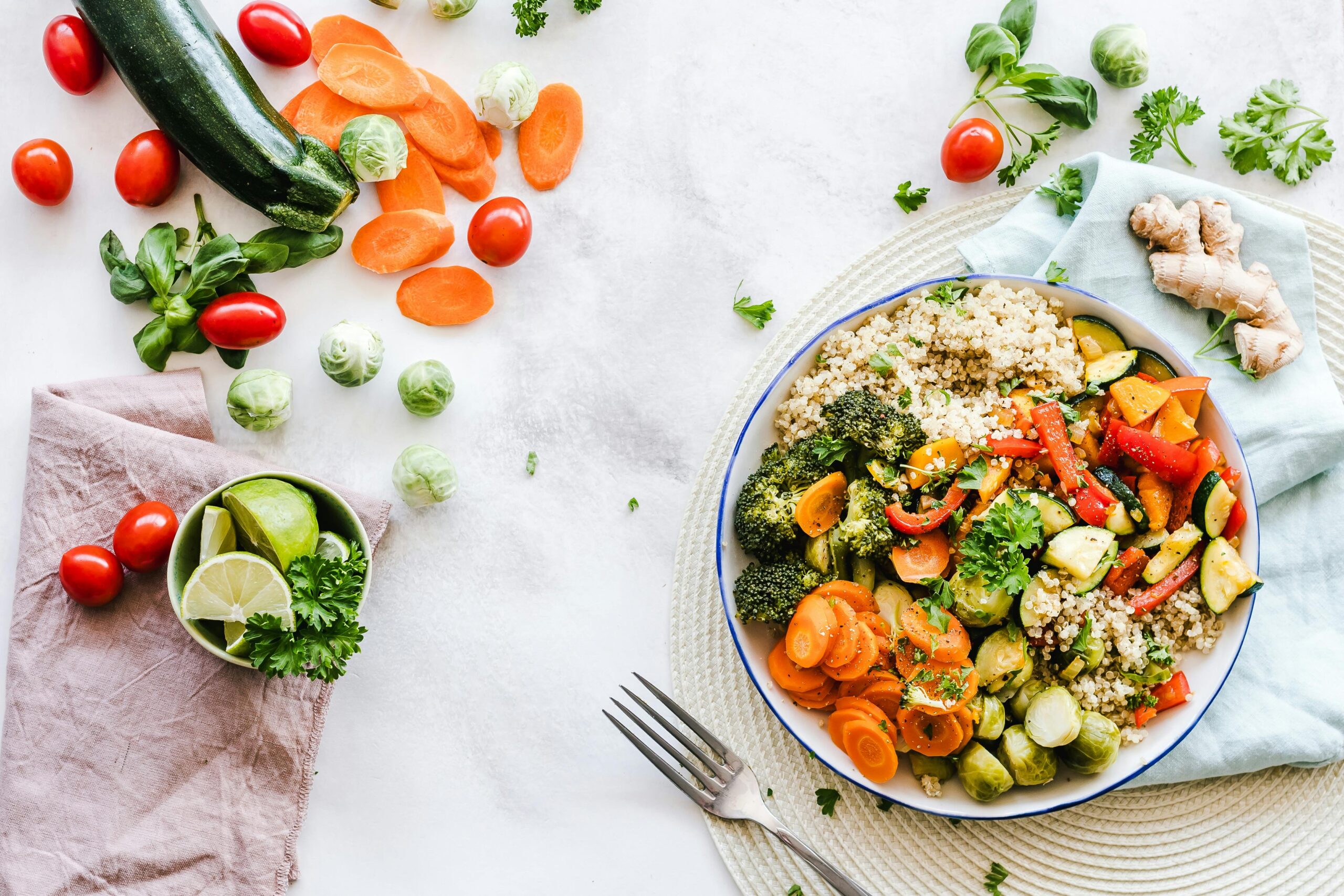The ketogenic diet (keto diet) has taken the health and fitness world by storm for its ability to help people lose weight, improve mental clarity, and even manage chronic diseases. But what exactly is the keto diet, how does it impact your body, and how can you create a sustainable meal plan? This comprehensive guide will cover everything you need to know about the keto diet.
What is the Keto Diet?
The keto diet is a low-carb, high-fat eating plan that forces your body into a metabolic state called ketosis. In ketosis, your body burns fat for fuel instead of carbohydrates, leading to significant fat loss and other health benefits.
- Typical Macronutrient Breakdown:
- 70–80% Fat
- 10–20% Protein
- 5–10% Carbohydrates
This drastic reduction in carbs (typically under 50 grams per day) shifts the body’s primary energy source from glucose (carbs) to ketones (produced from fat).
How Does the Keto Diet Work?
- Carb Reduction:
By limiting carbs, your glycogen stores are depleted, and your body turns to fat for energy. - Ketone Production:
In the absence of carbs, your liver converts fatty acids into ketones, which become your body’s primary energy source. - Fat Burning:
With fat as the primary fuel, your body becomes highly efficient at burning fat for energy, leading to weight loss.
Benefits of the Keto Diet

- Weight Loss:
- Fat becomes your primary energy source, and hunger-reducing effects of ketones can help with calorie control.
- Studies show keto diets can lead to 2–3 times more weight loss than low-fat diets.
(Source: PubMed)
- Improved Mental Clarity:
Ketones provide a stable and efficient energy source for the brain, improving focus and reducing brain fog. - Blood Sugar and Insulin Control:
The keto diet is beneficial for people with type 2 diabetes by stabilizing blood sugar levels and improving insulin sensitivity. - Increased Energy Levels:
Without blood sugar spikes and crashes, many people report more consistent energy throughout the day. - Potential Therapeutic Benefits:
Research suggests that keto diets may benefit conditions like epilepsy, Alzheimer’s, and even certain cancers.
Potential Downsides and Risks
- Keto Flu:
Temporary side effects like fatigue, headaches, and nausea as your body adjusts to burning fat instead of carbs. - Nutrient Deficiencies:
Without careful planning, you may lack certain vitamins and minerals, such as magnesium and potassium. - Social Challenges:
Following a strict diet can be difficult in social situations or while dining out.
How to Get Started on the Keto Diet
1. Calculate Your Macros
Use a keto calculator like the one from Keto Calculator to determine your ideal macronutrient intake based on your goals, weight, and activity level.
2. Stock Up on Keto-Friendly Foods

Focus on whole, nutrient-dense foods that align with the keto diet, such as:
- Fats: Avocados, olive oil, butter, coconut oil, nuts, and seeds.
- Proteins: Grass-fed beef, poultry, eggs, and fatty fish like salmon.
- Low-Carb Vegetables: Spinach, kale, broccoli, zucchini, and cauliflower.
- Dairy: Full-fat cheese, heavy cream, and Greek yogurt.
- Snacks: Pork rinds, olives, and hard-boiled eggs.
3. Avoid High-Carb Foods
Steer clear of:
- Sugary foods (candy, soda, desserts)
- Grains (bread, pasta, rice)
- Starchy vegetables (potatoes, corn)
- Most fruits (except berries in moderation)
4. Meal Prep and Plan Ahead
Planning meals and snacks in advance helps you stay on track and avoid reaching for non-keto options.
Sample 7-Day Keto Meal Plan
Day 1
- Breakfast: Scrambled eggs with spinach and avocado.
- Lunch: Grilled chicken Caesar salad (no croutons, extra dressing).
- Dinner: Salmon with asparagus sautéed in butter.
- Snacks: A handful of macadamia nuts, celery sticks with cream cheese.
Day 2
- Breakfast: Bulletproof coffee (coffee blended with butter and MCT oil).
- Lunch: Lettuce-wrapped burger with cheese and bacon.
- Dinner: Zucchini noodles with Alfredo sauce and shrimp.
- Snacks: Hard-boiled eggs, pork rinds.
Day 3
- Breakfast: Keto pancakes with sugar-free syrup.
- Lunch: Cobb salad with avocado, eggs, and turkey.
- Dinner: Grilled steak with roasted Brussels sprouts.
- Snacks: Fat bombs, cucumber slices with guacamole.
(Continue similar meals for the rest of the week.)
Tracking Calories on Keto
While keto naturally curbs appetite, weight loss ultimately depends on maintaining a calorie deficit. Use apps like MyFitnessPal or Carb Manager to track your food intake and ensure you stay within your daily calorie and carb limits.
Supplements to Consider
- Electrolytes: Replenish sodium, magnesium, and potassium to avoid the keto flu.
- MCT Oil: Boost ketone production and energy.
- Omega-3 Fatty Acids: Improve heart health and reduce inflammation.
- Vitamin D: Support bone health and immune function.
Common Mistakes to Avoid
- Not Eating Enough Fat
Ensure you’re meeting your fat intake to stay in ketosis. - Overeating Protein
Excess protein can be converted to glucose, which might kick you out of ketosis. - Neglecting Veggies
Include non-starchy vegetables for fiber and essential nutrients. - Not Drinking Enough Water
Stay hydrated to support digestion and overall health.
FAQs About the Keto Diet
Q: How long does it take to get into ketosis?
A: Most people enter ketosis within 2–4 days of starting a keto diet, though it may take longer depending on your metabolism and activity level.
Q: Can I follow keto if I’m vegan or vegetarian?
A: Yes, a vegan keto diet is possible with careful planning and reliance on plant-based fats and proteins.
Q: Is keto safe for everyone?
A: The keto diet may not be suitable for people with certain medical conditions like pancreatitis or gallbladder disease. Consult your doctor before starting.
Conclusion: Is the Keto Diet Right for You?
The keto diet offers numerous benefits, from effective weight loss to improved mental clarity and energy levels. However, it requires careful planning, commitment, and monitoring. By understanding the science, creating a meal plan, and tracking your progress, you can maximize the benefits of the ketogenic lifestyle.
Disclaimer:
The content provided here is for informational purposes only. This blog is not intended to substitute for medical advice, diagnosis, or treatment. Always seek the advice of a qualified healthcare provider for any questions or concerns you may have regarding a medical condition. Reliance does not endorse or recommend any specific tests, physicians, procedures, opinions, or other information mentioned on the blog.




